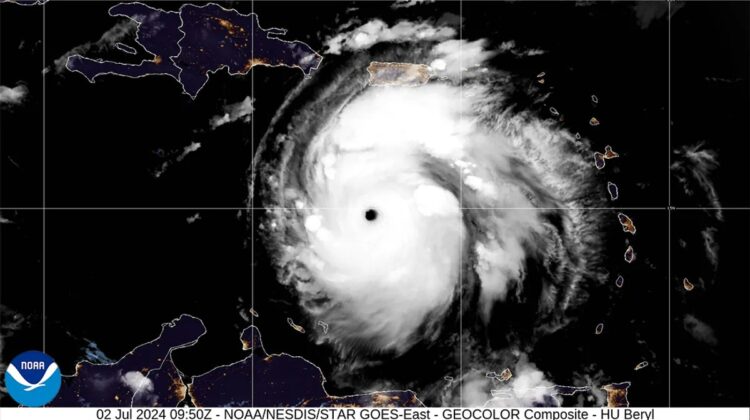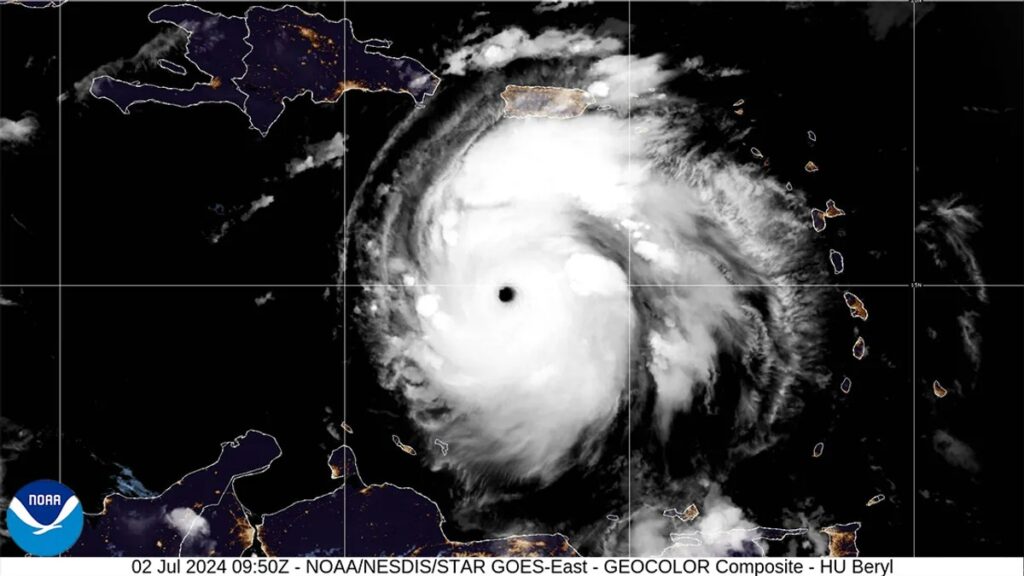
Hurricane Beryl has made history yet again, becoming the earliest Category 5 Atlantic hurricane ever recorded. The storm, which unleashed its fury across several Caribbean islands on Monday, has left a trail of devastation in its wake.
According to the National Hurricane Center’s latest update at 5am AST, Beryl boasts maximum sustained winds of 270 kilometers per hour (165 miles per hour), accompanied by even stronger gusts. This places it squarely in the highest category of hurricane intensity.
Forecasters acknowledge the uncertainty surrounding Beryl’s future trajectory, noting the possibility of weakening in the coming hours. However, they caution that Beryl is likely to maintain its formidable strength as it traverses the Caribbean Sea throughout the week.
Category 5 hurricanes like Beryl are notorious for their capacity to inflict catastrophic damage. The havoc wrought by Beryl on Monday has already left thousands in the Caribbean without power, forcing many into temporary shelters. Tragically, reports from St Vincent and the Grenadines indicate at least one fatality.

Image credit: CIRA/NOAA
Currently, Beryl is barreling towards Jamaica, prompting authorities to issue a hurricane warning. The island nation braces itself for potentially life-threatening winds, heavy rainfall, and flash floods anticipated for Wednesday.
While the Atlantic hurricane season typically spans from June 1 to November 30, the first named hurricane typically forms in early to mid-August, with major hurricanes typically forming later in the season.
However, Beryl has defied convention on both counts. Originating from a tropical storm on June 28, it swiftly escalated to Category 4 status on Sunday, making it the earliest storm of its magnitude on record. Now, it solidifies its place in history as the earliest Category 5 hurricane in the Atlantic.
“Hurricanes don’t adhere to calendar months; they respond to their environmental conditions,” explains hurricane expert Jim Kossin. “Beryl’s unprecedented development in June mirrors conditions typically seen in September.”

The potency of Hurricane Beryl, alongside predictions of an “extraordinary” remainder of the season, is attributed largely to the El Niño-Southern Oscillation. The transition from the warming influence of El Niño to the hurricane-boosting effects of La Niña has further amplified Beryl’s strength.
Amid a decade marked by increasingly intense storms and the broader impact of climate change, some scientists advocate for a new classification: Category 6 hurricanes. This proposal reflects a growing consensus that current categories may no longer adequately capture the ferocity of modern storms.
Hurricane Beryl’s unprecedented early arrival and rapid intensification serve as a stark reminder of the unpredictable and escalating nature of Atlantic hurricanes, underscoring the urgency for robust preparedness and response measures in vulnerable regions.

Leave a Reply